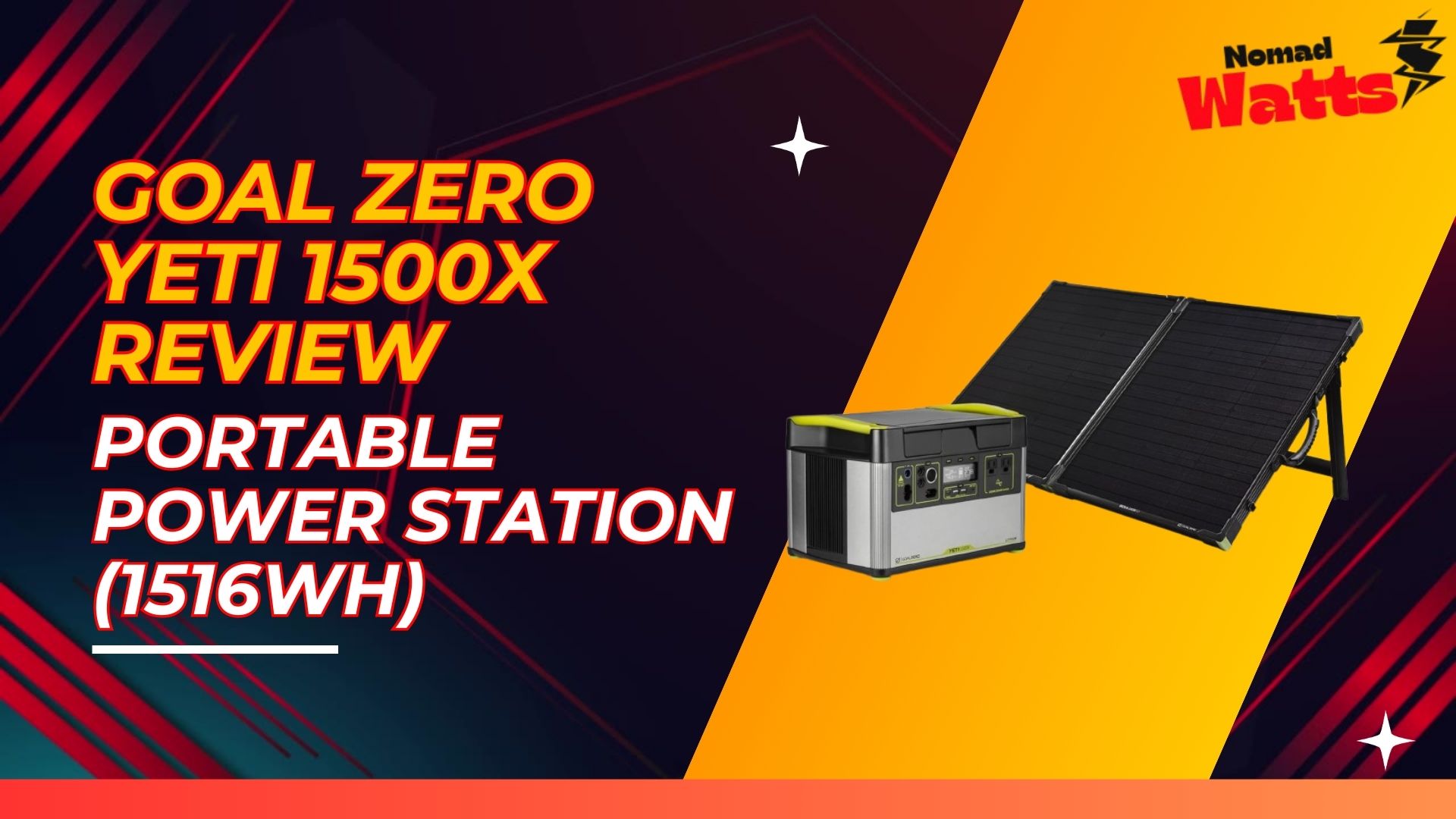Meet the heavy-duty option: the Goal Zero Yeti 1500X. It packs 1,516 watt-hours of power (the official figure). With its 2,000W inverter, it can run pretty much all your appliances up to 2kW – think full-sized fridges, power tools, multiple laptops, etc. This power station is geared for serious jobs: whole-house circuits (with the right kit), large off-grid setups, and lengthy emergencies.
It’s built tough. The case is thick, with carry handles on sides and a built-in fold-out handle on top. Weighing about 45.6 lbs, it’s not something to sling around lightly – consider it more of a base-station or rolling backup (there’s a Yeti Roll Cart accessory to add wheels). Inside, it has a large pure-sine inverter that can handle 2,000W continuous (3,500W surge), plus a 1,516Wh lithium battery.
Outlet-wise, the 1500X has two AC outlets, two USB-A, two USB-C (60W PD + 18W), a 12V car port, and a 6mm port – plenty to run lights, charge phones and cameras, and even run 12V RV gear. The dual USB-C makes it handy for modern devices, and the strong AC output means it can run high loads like a heater (within 2kW) or a defrosting freezer.
Recharging the 1500X takes some time due to its size. Using the 600W adapter, it could take 6+ hours to reach full. You can also recharge from 12V (car) or solar. Connect solar panels and the built-in 600W MPPT charge port will top it up in around 4-8 hours (depending on panel wattage). Goal Zero’s spec says 3-4 hours with four 150W panels.
In real use, people love the 1500X for RV’s and home backup. It’s large enough to run AC window units or sump pumps in a power outage (though not all at once). Outdoors, it’s great for big projects like construction power tools or movie gear at events. The downside is the heft; it’s bulkier than the 1000X. Users note you’ll likely keep this near your base camp, rather than carry it far afield.
In summary: The Yeti 1500X is a powerful workhorse for big needs. It offers 1,516Wh capacity, 2,000W output. It’s heavy (46 lbs) and large, but that’s the tradeoff for nearly double the runtime of the 1000X. If you need substantial off-grid power without going to the 3000X, this is the sweet spot. And as part of Goal Zero’s ecosystem, you can expand it (e.g. with 24-volt expansion batteries) or integrate it into home backup with their Home Integration Kit (though the kit is more for the bigger units).
Product Description: The Goal Zero Yeti 1500X is a large portable generator with a 1.5 kWh lithium battery. It’s built like a toolbox with a strong handle and hard plastic shell. Outputs include 2×120V AC (2000W total), 2× USB-A, 2× USB-C (60W PD + 18W), 1× 12V car, 1× 6mm. The battery can power home essentials for hours. It weighs ~45.6 lbs, so it’s often stationary once in place. The display and controls are straightforward, showing charge status and allowing on/off of individual outlets. This unit is popular for van life, job sites or emergency kits where significant power is needed.
- Capacity & Output: 1,516 Wh; AC inverter 2,000W continuous (3,500W surge).
- Ports: 2× AC outlets; 2× USB-A; 2× USB-C (PD 60W + 18W); 12V car; 6mm barrel port.
- Charging: 600W AC adapter (0-100% in ~3-6h), 24V solar input (600W max, 3-4h with panels), or 12V DC.
- Portability:64 lbs (20.7 kg); carry handles on ends and foldable top handle. A roll cart is available separately.
- Cycle Life: ~500 cycles to 80% capacity, warranty 2 years.
Goal Zero 1500X vs 1000X – Is the Extra Capacity Worth the Size/Weight?
Having summarized each, let’s directly compare. The 1500X has 1,516Wh and 2,000W output. The 1000X has ~997Wh and 1,500W. In concrete terms, the 1500X stores 50% more energy and can sustain 33% more load. However, it weighs ~46 lbs vs 32 lbs for the 1000X. So the 1500X is roughly 1.4 times heavier.
If you need that extra juice often (e.g. running appliances overnight, full whole-house circuits via a transfer switch, or very long outings), the 1500X’s bigger battery will shine. You can run a heavy fridge and a heater together for longer. If your needs are lighter, the 1000X is easier to carry and usually cheaper. The 1000X is better for portability and packing into vehicles or RVs without maxing out payload.
In practice, think about your use: For daily tailgate parties or occasional camping, the 1000X is likely enough. It already can run most devices that typical users care about (TVs, lights, kitchen gadgets). For multi-day self-sufficient living or serious power outages, the 1500X makes more sense so you’re not recharging as often. Some buyers even pair a 1000X and a 500X if they want flexibility.
Bottom line: The extra capacity is worth it if your regular power draw approaches 1000W or lasts all day. Otherwise, the smaller 1000X may be the sweet spot for weight. Both share the same design and reliability. Always weigh capacity versus portability, but knowing the specs side-by-side helps clear up which best fits your lifestyle.



